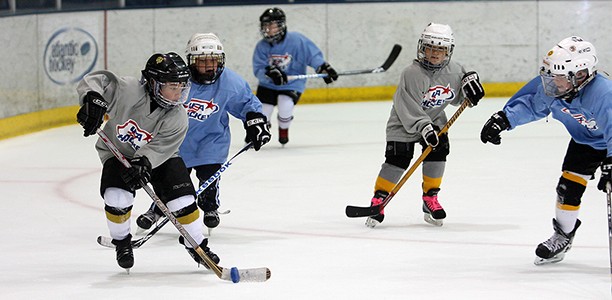Youth hockey league not liable for post-game spectator brawl
 At a youth hockey game in Rome, New York, families of the 13-year-old players rooted for their teams with increasing intensity. Some spectators turned belligerent, and after the game ended, one player’s mother confronted another player’s mother. The provocation blew up into a full-scale melee involving multiple family members and spectators. Raymond Pink, a bystander who was trying to break up the fight, was assaulted by Matthew Ricci, who was held criminally liable. In addition to suing the brawling spectators, Pink sued the Rome Youth Hockey Association, which rented the hockey arena. The RYHA argued that it had no duty to prevent spectators from being criminally assaulted by other spectators after a game, but New York’s intermediate court allowed the case to go forward.
At a youth hockey game in Rome, New York, families of the 13-year-old players rooted for their teams with increasing intensity. Some spectators turned belligerent, and after the game ended, one player’s mother confronted another player’s mother. The provocation blew up into a full-scale melee involving multiple family members and spectators. Raymond Pink, a bystander who was trying to break up the fight, was assaulted by Matthew Ricci, who was held criminally liable. In addition to suing the brawling spectators, Pink sued the Rome Youth Hockey Association, which rented the hockey arena. The RYHA argued that it had no duty to prevent spectators from being criminally assaulted by other spectators after a game, but New York’s intermediate court allowed the case to go forward.
Fortunately, the New York Court of Appeals (the state’s highest court) reversed in Pink v. Ricci. The unanimous court held that the criminal assault on Pink was “not a reasonably foreseeable result of any failure to take preventive measures.” Although bad behavior by spectators at youth hockey games generally was a known occurrence, and in violation of RYHA’s internal policies that permit on-ice officials to remove spectators who engage in “obscene, racial, or vulgar language,” the court held that the internal policy exceeded the tort standard of “ordinary care” and did not serve as a basis for imposing liability. Moreover, agreeing with PLF’s amicus brief, the court held that bad sportsmanship on the part of spectators could not serve as notice to RYHA that the shouting and rude behavior would result in a criminal assault.
The volunteers who staff youth sports programs as team managers, coaches, and referees should breathe a sigh of relief. The creation of a duty in this case would have extended well beyond this one hockey arena to fields and arenas maintained by cities, parks departments, universities, and other private property owners who make their space available to the public for sporting events. The cost of liability insurance alone could have driven these valuable opportunities out of existence. Fortunately, the hockey-playing youth of New York and their league volunteers can return their focus to playing the game, not unreasonably imposed tort liability.

